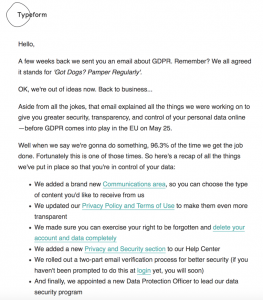In 2015 global mobile data traffic reached 50.4 billion gigabytes, 50 times as much as in the year 2000, and is continuing its stellar growth in 2016. Especially in recent years, streaming video to mobile devices is a major contributor to this growth and will account for 75% of total mobile internet traffic by 2020. YouTube and, as of late, Facebook are the usual suspects where large amounts of videos are consumed but today there are many apps that are experimenting with new formats that have become household names, especially among younger audiences. As a result, mobile video advertising is innovating in parallel and is introducing new rules to the advertising game.
Trends in mobile video formats
Arguably the most influential new video app is Snapchat which singlehandedly created the new vertical video format for advertisers. Interestingly, vertical video has been ridiculed before on internet forums, calling it Vertical Video Syndrome (culminating with this parody PSA). Snapchat purposefully prevents its users to shoot photos and videos in landscape mode because people are using their phones in portrait mode 95% of the time. Vertical video ads are therefore 9 times more likely to be watched to completion, Snapchat claims.
Another new category is mobile first live streaming apps. Meerkat and Periscope are the most popular services for people that want to live broadcast their lives to the world. Neither of them is offering paid advertising at the moment but some brands have already started channels and are using influencers to advertise as well. Facebook was quick to jump on the bandwagon as well as YouTube as both are offering similar functionalities now.
Live streaming has also taken off with gamers, most notably through Twitch. Similar as people watching sports games on TV, platforms such as Twitch allow people to watch computer games being played by both professionals and amateurs. Since it’s spinoff from Justin.tv in 2011 it has grown into a community with fenomenal engagement which moved Amazon to throw in $ 1 billion and acquire it in 2014.
Naturally market leader YouTube is not sitting still either. The video platform introduced 360 degree videos in the spring of last year which allows the viewer to be in control of the camera direction which makes it very interactive. Facebook was quick to follow in September and is betting big on the format in combination with virtual reality products such as the Oculus Rift and Samsung Gear. Big brands like Coca Cola and Disney were quick to adopt 360 video and launched immersive ads on both major platforms.
Since Facebook launched autoplay videos we’ve seen another defining trend arising: captioned video. Users scrolling their news feeds get “sucked into” watching videos but often neglect to turn on the sound. As a response many uploaders started captioned their videos to ensure the message still comes across. Now Facebook is even offering to do the captioning for you, at least when you are a video advertiser.
Streaming services
Another trend that is clearly visible is that people are starting to watch more and more long form video on their mobile devices. The combination of cord-cutting trends and improvements in mobile hardware along with cheaper data plans has created an ideal environment for mobile video streaming – and more importantly, paid subscriptions. In what has been a relatively tough market for subscriptions, both HBO Now and Showtime introduced mobile apps without requiring a paid cable service and have fared well. Also, Netflix introduced in-app subscription purchases on iOS in late September, while YouTube launched YouTube Red. In China, video streaming services Youku, Tencent Video and iQIYI did well in terms of revenue.
Room for improvement
With these developments the traditional 30 second TV ad is quickly losing relevance. Mobile users today expect ads that are native and match the app’s context. The best campaigns we see are fulfilling both these requirements and rely heavily on storytelling which makes a person want to watch the ad in its entirety.
Besides new formats, there is also plenty of room for newcomers to iterate within mobile video advertising, especially in how to reach audiences effectively, how to intelligently target and also how to measure ROI for campaigns. The current methods of measurement, such as Cost per Install (CPI) has created “ad fatigue”, where the same video ad is shown to the same viewer multiple times due to a lack of audience intelligence. Brands are also not able to measure effectiveness as CPI was first introduced for app publishers who sought to drive app installs, rather than brand campaigns on mobile. CPCV, or “Cost Per Completed View”, is more favorable as it minimizes risk between CPI and CPM(V), or Cost Per Thousand Views, which may or may not include exposure to the entire message.
***
With these developments still being in a somewhat early stage and a whole new field of augmented and virtual reality poised to take off in the near future it is going to be an exciting time to be in mobile video advertising. With innovation at this pace, things tend to become unpredictable and today’s winners may be tomorrow’s has-beens. For advertisers, it is more important than ever to keep up and experiment along with mobile publishers.
Digital & Social Articles on Business 2 Community(88)
Report Post






